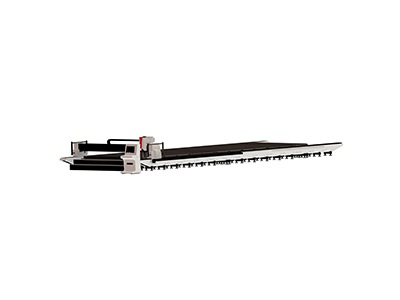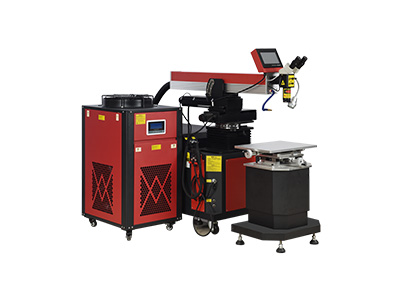- No.609, Centre Of Huijin Nanxiang, Yinxiang Road, Nanxiang Town, Jiading District, Shanghai, China
- sherry@sanmachines.com
- +86-18616767021
What information do you need to know when buying a laser marking machine?
Laser marking machines have become an essential tool across industries, providing precise, high-quality, and permanent marks on a wide range of materials. However, with so many models and technologies available on the market, choosing the right laser marking machine for your needs can be challenging. Each machine offers unique benefits tailored to specific materials and applications, so its capabilities should be matched to your production needs. This guide will walk you through the key factors to consider, ensuring you make an informed decision to maximize your investment.

Types of Laser Marking Machines
Different laser marking machines are designed to work with specific materials, offering unique advantages depending on the type of laser used. Knowing the materials you plan to use can help you choose the right type of laser. Here are the main types of laser marking technology and the materials they are most compatible with:
Fiber laser marking machines are known for their efficiency and precision, making them ideal for marking metals such as stainless steel, brass, aluminum, copper, and titanium, as well as alloys used in industrial settings. These machines excel at high-speed marking, providing deep engraving and high-contrast effects on metal surfaces without damaging the material. Fiber lasers also work well with certain plastics, such as ABS and polycarbonate, making them a popular choice in industries such as electronics, automotive, and jewelry for marking serial numbers, barcodes, logos, and intricate designs.
CO₂ laser marking machines are better suited for non-metallic materials due to their longer wavelength. They work well with wood, leather, glass, ceramics, and textiles, making them ideal for decorative engraving and product customization. These machines are also effective at marking a variety of plastics, paper, and cardboard, which makes them useful in the packaging and craft industries. CO₂ lasers are often used for applications that require cutting and marking organic materials, such as engraving logos, personalizing gifts, or decorating glassware, because of their precision and ability to produce smooth, clean cuts.
For more delicate and heat-sensitive materials, the cold marking process of UV laser marking machines offers unique advantages. These machines are ideal for processing silicon, glass, ceramics, and sensitive plastics because they minimize heat damage and ensure precise marking. UV lasers are often used in the medical, pharmaceutical, and electronics industries to mark items such as vials, syringes, and microchips. They can also effectively mark transparent materials and plastics without causing discoloration, making them indispensable in industries where aesthetics and readability are critical.
Laser Power and Applications
The power of a laser marking machine affects the speed and depth of the machine's marking. Higher laser powers allow for faster marking and deeper engraving, while lower powers are suitable for finer, more detailed applications.
Fiber lasers typically range in power from 20W to 100W or higher. 20W to 30W fiber lasers are suitable for marking small metal parts, engraving jewelry, and creating high-contrast marks on plastics. On the other hand, 50W to 100W fiber lasers are ideal for deep engraving, mass production, and applications that require higher speeds, such as automotive parts and tools.
CO₂ laser marking machines typically range in power from 30W to 150W, with higher-powered models excelling at marking and engraving thicker non-metallic materials. 30W to 60W CO₂ lasers are ideal for engraving wood, leather, and acrylic, while 100W to 150W models are better suited for cutting thick materials such as MDF, rubber, and textiles.
When using UV, power levels are typically lower, between 3W and 10W, as this laser is designed for fine marking. It is ideal for marking glass, medical devices, and electronic components without causing heat damage or discoloration. Selecting the right power level ensures optimal performance for your application, balancing speed, quality, and cost-effectiveness.
Marking Area and Work Size
A laser marking machine’s marking area and work size determine the size of objects it can accommodate and the area it can effectively mark in a single pass. Laser marking machines come with fixed or adjustable marking areas, typically ranging from 110mm x 110mm to 300mm x 300mm or larger. When selecting a machine, make sure the marking area aligns with your typical product size to optimize efficiency and quality.
For applications that require small, precise marks, such as barcodes, serial numbers, or intricate designs on jewelry and tools, compact marking areas like 110mm x 110mm ensure high accuracy and precision. Smaller areas are also useful when marking individual parts, as they allow for better control over fine details.

cost considerations
The cost of a laser marking machine can vary greatly depending on the type of laser, power level, brand and additional features, so the initial investment and long-term operating expenses need to be evaluated.
Entry-level models of fiber laser marking machines typically cost between $2,000 and $3,000, while high-end industrial versions with advanced software and automation features can cost more than $10,000. Known for their durability and low maintenance, these machines offer excellent long-term value, especially for applications involving metals or high-volume production. CO₂ laser marking machines typically cost between $2,500 and $4,500, with more powerful or custom models costing up to $30,000. UV marking machines are more expensive.
In addition to the price of the machine, other financial considerations include installation, training and accessories such as rotating attachments, cooling systems or protective guards. Operating costs such as power consumption, maintenance and consumables (such as replacement lenses or filters) also impact the total cost of ownership. While more affordable machines may seem attractive, investing in higher quality machines with reliable after-sales support and longer service life can increase productivity and reduce downtime, ultimately providing a more profitable investment over time. Return on investment (ROI).
Choosing the right laser marking machine requires careful evaluation of several key factors, including laser type, power, marking area, and overall cost. Understanding the materials you will be working with and the specific application you plan to use the machine for will help you decide between fiber optic, CO2, UV, or green laser systems. While initial costs are important, it is equally important to consider long-term operating expenses, maintenance needs and after-sales support to maximize your investment. By weighing these considerations, you can confidently choose a machine that will increase productivity, deliver consistent results, and support the future growth of your business.
Related product links


































 Company News
Company News




